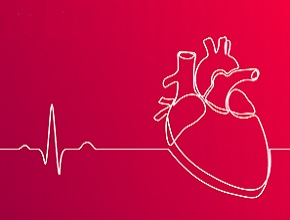Internal Medicine Rapid Refreshers is a series of concise information-packed videos refreshing your knowledge on key medical issues that general practitioners may encounter in their daily practice. This episode reviews the fundamental principles of managing ST-segment elevation acute coronary syndrome.
Contents
Useful links
- Chapter on acute coronary syndrome (ACS) from the McMaster Textbook of Internal Medicine
- Podcast on acute coronary syndromes from The Intern at Work
Transcript
Introduction
My name is Shaan Gupta and I’m a senior medical resident in internal medicine at McMaster University. In this video we will go through a practical approach to the identification and management of ST-segment elevation myocardial infarction (STEMI). This Rapid Refresher is intended for subspecialty physicians who are returning to the general internal medicine wards during the coronavirus disease 2019 (COVID-19) pandemic.
Definitions
Acute coronary syndrome (ACS) is a clinical syndrome of acute chest pain related to myocardial ischemia. ACS is subclassified based on electrocardiographic (ECG) findings and cardiac biomarkers into unstable angina, non–ST-segment elevation myocardial infarction (NSTEMI), and ST-segment elevation myocardial infarction (STEMI). In this video we are focusing on the identification and management of STEMI.
Diagnosis
Diagnosis is based primarily on the presence of cardiac chest pain and ST-segment elevations on ECG. Cardiac biomarkers may also be elevated but are not necessary for the diagnosis, as they may take time to rise. Note that ST-segment elevation should occur in contiguous leads with reciprocal ST-segment changes. If you suspect myocardial infarction (MI) and see ST depressions in the anterior leads, order a 15-lead ECG to look for a concealed posterior STEMI. This would require adding 3 extra leads to the back of the patient continuing from V6.
Note that the traditional STEMI equivalent of new left bundle branch block on the ECG is no longer considered specific for STEMI unless the ECG also shows additional signs, such as those outlined in the section for ECG criteria in the chapter on STEMI from the McMaster Textbook of Internal Medicine. Please refer to the chapter for full criteria.
Clinically, STEMI may also manifest as bradycardia, tachyarrhythmia, acute heart failure, and cardiogenic shock.
In Hamilton, if you have concern for STEMI, please immediately call the Heart Investigation Unit (HIU) to speak with the interventional cardiologist on call, who will facilitate prompt management of your patient.
Further investigations
Start by ordering a panel of bloodwork (blood tests), including the complete blood count (CBC), electrolytes, creatinine, troponin, blood gas, international normalized ratio (INR), and partial thromboplastin time (PTT).
Order a chest x-ray to look for pulmonary edema.
During the current COVID-19 pandemic consider viral causes, such as viral myocarditis or demand ischemia from viral infection.
Lastly, consider other causes of ST-segment elevation, including aortic dissection, hyperkalemia, large pulmonary embolism, neurologic events, or pericarditis. For details on the work-up of other causes of chest pain, refer to the Internal Medicine Rapid Refresher on chest pain.
Management
Reperfusion is the key priority in STEMI. In Hamilton, percutaneous coronary intervention (PCI) is readily available and in this video we will focus on the logistics of organizing this. However, if PCI is not readily available at your institution, then urgent fibrinolysis is indicated. If you’re considering fibrinolysis, please refer to the relevant section in the STEMI chapter for drug choice, dosage, and contraindications.
Once the diagnosis of STEMI is confirmed, begin the initial management while concurrently coordinating transfer to the HIU at the Hamilton General Hospital for angiography. Ensure a code status is obtained, as this will influence candidacy for further therapies.
1. Initial management: Ensure the patient has good intravenous (IV) access. Supplemental oxygen should be administered to a target oxygen saturation of 92% to 96%. Start continuous ECG monitoring to monitor for the development of any arrhythmias.
If you’re suspecting an inferior MI, give a small bolus of fluid to support cardiac preload. If the patient is in cardiogenic shock, vasopressors may be needed to stabilize the patient prior to transfer; in such cases you may request assistance from colleagues in cardiology, intensive care, or emergency medicine, who are available 24/7.
2. Give a loading dose of acetylsalicylic acid (ASA) 162 mg chewed.
3. Assess the patient’s bleeding risk. If you feel the risk posed by the MI outweighs the bleeding risk, then give a bolus of heparin 4000 to 5000 IU IV.
4. Discuss with the interventional cardiologist on call at the HIU to decide if a P2Y12 inhibitor, such as clopidogrel or ticagrelor, is indicated.
5. Ischemic chest pain can be relieved with nitroglycerin spray 0.4 mg sublingually every 5 minutes as needed (PRN). If the pain persists, switch to an IV nitroglycerin infusion 5 to 10 microg/min and titrate the dose up by 5 to 20 microg/min every 3 to 5 minutes until the symptoms are resolved or you’re limited by hypotension. Use particular caution with nitroglycerin if you suspect your patient may have an inferior MI.
6. If the chest pain persists, consider adding morphine 4 to 8 mg IV followed by 2 mg IV every 5 to 15 minutes as needed.
References
For more information, take a look at the resources linked above, including the full chapter on ACS from the McMaster Textbook of Internal Medicine or The Intern at Work podcast on ACS.
 English
English
 Español
Español
 українська
українська











